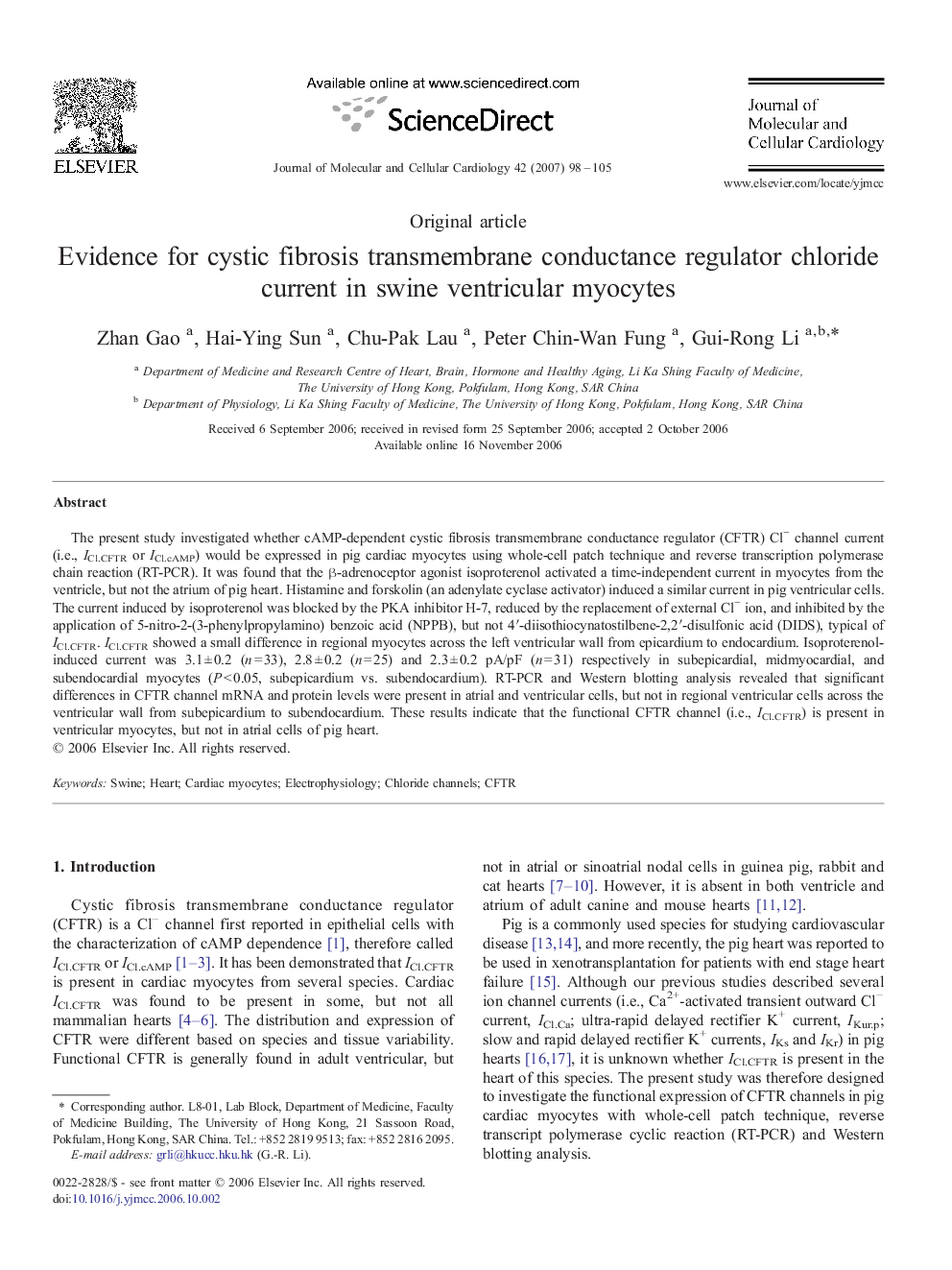| Article ID | Journal | Published Year | Pages | File Type |
|---|---|---|---|---|
| 10954272 | Journal of Molecular and Cellular Cardiology | 2007 | 8 Pages |
Abstract
The present study investigated whether cAMP-dependent cystic fibrosis transmembrane conductance regulator (CFTR) Clâ channel current (i.e., ICl.CFTR or ICl.cAMP) would be expressed in pig cardiac myocytes using whole-cell patch technique and reverse transcription polymerase chain reaction (RT-PCR). It was found that the β-adrenoceptor agonist isoproterenol activated a time-independent current in myocytes from the ventricle, but not the atrium of pig heart. Histamine and forskolin (an adenylate cyclase activator) induced a similar current in pig ventricular cells. The current induced by isoproterenol was blocked by the PKA inhibitor H-7, reduced by the replacement of external Clâ ion, and inhibited by the application of 5-nitro-2-(3-phenylpropylamino) benzoic acid (NPPB), but not 4â²-diisothiocynatostilbene-2,2â²-disulfonic acid (DIDS), typical of ICl.CFTR. ICl.CFTR showed a small difference in regional myocytes across the left ventricular wall from epicardium to endocardium. Isoproterenol-induced current was 3.1 ± 0.2 (n = 33), 2.8 ± 0.2 (n = 25) and 2.3 ± 0.2 pA/pF (n = 31) respectively in subepicardial, midmyocardial, and subendocardial myocytes (P < 0.05, subepicardium vs. subendocardium). RT-PCR and Western blotting analysis revealed that significant differences in CFTR channel mRNA and protein levels were present in atrial and ventricular cells, but not in regional ventricular cells across the ventricular wall from subepicardium to subendocardium. These results indicate that the functional CFTR channel (i.e., ICl.CFTR) is present in ventricular myocytes, but not in atrial cells of pig heart.
Related Topics
Life Sciences
Biochemistry, Genetics and Molecular Biology
Cell Biology
Authors
Zhan Gao, Hai-Ying Sun, Chu-Pak Lau, Peter Chin-Wan Fung, Gui-Rong Li,
